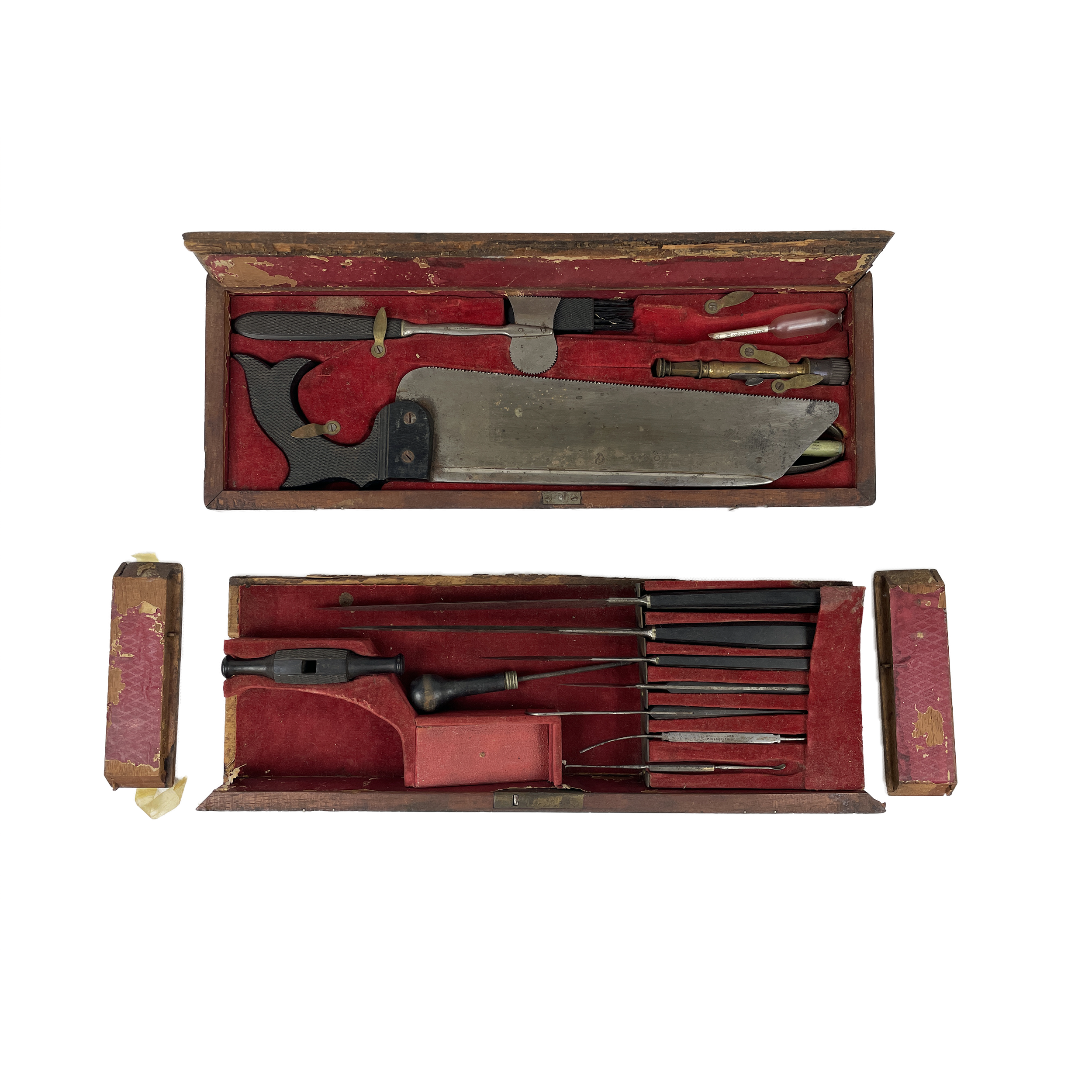The Bloedner Monument
Currently on view in our new exhibition The Commonwealth: Divided We Fall.
Bloedner, August (1827 – 1872), carved by. 32nd Indiana Infantry Monument, installed at the site of the Battle of Rowlett’s Station, Munfordville, Kentucky, 1862, and relocated to Cave Hill National Cemetery, Louisville, Kentucky, 1867. American (Munfordville, Kentucky), 1862. St. Genevieve limestone and Indiana limestone. On loan from the National Cemetery Administration (NCA), U.S. Department of Veterans Affairs.
The Bloedner Monument, which is thought to be the nation’s oldest remaining Civil War monument, is being housed at the Frazier as a long-term loan. The 32nd Indiana Infantry Monument, better known as the Bloedner Monument, has been housed at the Frazier since August 18, 2010.
Carved in January 1862, the 3,500-lb. limestone memorial features an eagle relief and a German-language inscription. It is believed to be the nation’s oldest surviving Civil War monument.
Private August Bloedner of the 32nd Indiana Infantry, a Union regiment comprised entirely of German-American immigrants, carved the monument after the Battle of Rowlett’s Station, which took place December 17, 1861 in Munfordville, Kentucky, to mark the interments of fellow soldiers who died there.
In 2010, the Frazier Museum obtained the monument through a long-term loan from the NCA. During museum hours, access to it is open to all members of the public free of charge.
Kentucky and the Civil War
The Frazier History Museum houses a significant collection of artifacts from the Civil War and continues to add objects with direct Kentucky ties. Many of our Civil War artifacts are currently on view in The Commonwealth: Divided We Fall.
U.S. Navy Shaving Kit, c. 1860
This shaving kit likely belonged to a sailor in the United States navy around the time of the Civil War. It includes a round box with lid, a rinsing cup, lather brush, a soap & lather cup, and two straight razors.
Ballot Box, c. 1861-1865
This portable wooden ballot box would have been used by U.S. soldiers during the Civil War to vote. The top piece slides back and forth so one can place either a white or black marble into the corresponding side through the small bowl. Voting mechanisms such as these have been used throughout history to cast votes anonymously.
Medical Kit of Dr. Washington T. Sandidge, c. 1860
Did you know that most surgical procedures on the frontlines of the Civil War involved amputations?
Approximately 60,000 amputations totaled about three-quarters of all medical operations during the war. While some may think that this period lacked medical advancement and capability, there were skilled doctors and surgeons in Kentucky tending to hundreds of wounded soldiers each day as the war pressed on. With the establishment of the Transylvania Medical School in Lexington in 1799 followed by the Louisville Medical Institute in 1837, Kentucky scholars rivaled the Ivy League. Medical professors like Daniel Drake and Benjamin Winslow Dudley were respected academics in the practice of botany, pharmacy, and anatomy who taught the next generation of physicians the importance of boiling surgical instruments well before Joseph Lister's methods of sterilization. One of these students was Washington Thompson Sandidge of Green County, Kentucky, who practiced as a physician in nearby Edmonton after receiving a diploma as a Doctor of Medicine from the Louisville Medical Institute in 1857. Benjamin Dudley signed Dr. Sandidge's diploma despite being a faculty member at Transylvania University, which could indicate the small number of medical professors qualified to approve graduates or the cooperative relationship between the two medical schools. Regardless, doctors often quarreled over patients or settled disputes through duels during this time, adding violence to a practice already marred by things like acquiring cadavers from grave diggers on the black market.
Back in Edmonton, Dr. Sandidge was serving the greater Metcalfe County area when the war began and was soon after captured by Confederate troops passing through town. He traveled with the troops and treated both Union and Confederate soldiers alike until the war ended in 1865. Dr. Sandidge undoubtedly performed many procedures on and off the battlefield with his field kit that includes an amputation saw for cutting through bone (laying flat in case), ronguer or bone forceps to remove bits of bone, a Hey’s saw that would create an incision to remove a round piece of the skull (bottom right), and a variety of smaller surgical tools like a scalpel for cutting into tissue. The tools are engraved with the name Snowden, which indicates Snowden & Brother of Philadelphia, makers of fine silver dental and medical tools.
After the war ended, Dr. Sandidge returned home to his family in Metcalfe County where he continued to visit patients on horseback in the Wisdom and Edmonton areas. He served as the local physician until his death at age ninety-four.







